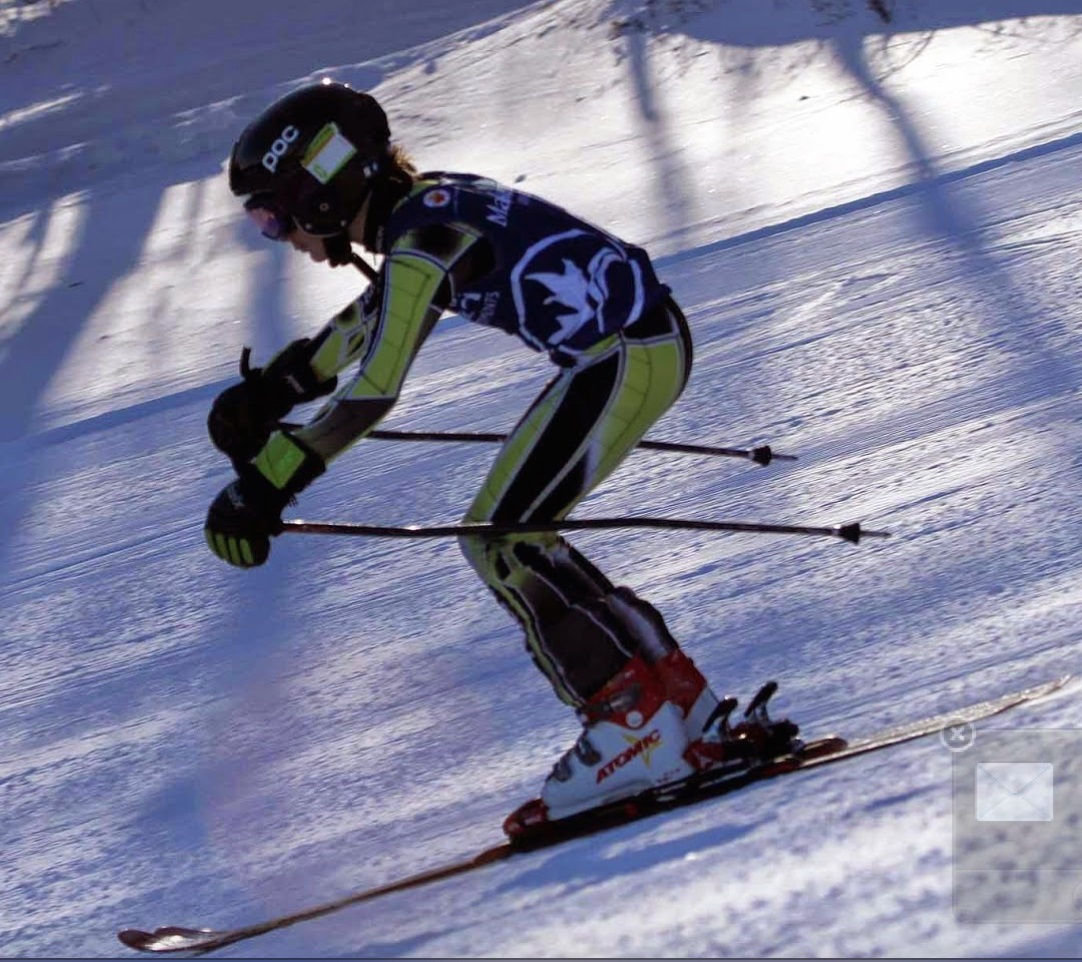Intro to ski racing
Pub
Share
Alpine ski racing is a great sport. Not only do you generally learn better technique and become a better skier with ski race training, but the competitive nature of the sport, together with the group-oriented training make the winter the better season, for many!
Ski racing differs from recreational skiing in several ways. First and foremost is the need to ski a given course, turning between gates, where the course setter wanted you to turn, as opposed to turning wherever you feel like it.
The race courses are generally icy and rutted from other racers, presenting quite a challenging environment.
Race equipment is also different and more challenging to ski, being designed to perform on ice and at higher speeds and higher turning forces than recreational equipment: the skis and boots are stiffer, the edges are sharper etc.
Types of events
Technical disciplines are Slalom (SL) and Giant Slalom (GS). Speed disciplines are Super G (SG) and Downhill (DH). Technical disciplines are turnier and speed disciplines are faster.
All alpine disciplines have the racer go through gates but Slalom stands apart, as the slalom racer will cross-block or clear the single hinged pole out of the way, while all other disciplines use flagged poles that the racer goes around... although, on the ragged edge of performance, you'll see all racers get very close and personal with the gates.
There are also other types of events that combine elements of the above, like panel slalom and duals. While ski cross is not considered an alpine discipline, it is a blast to watch and race in.
We'll cover the details and technical insights into race courses later.
Kids and racing
Kids can start ski racing as young as 6 and overall, the younger they start skiing, the better, as overall skiing volume matters a lot, especially at the younger ages. At the younger ages, a focus on technique and free skiing in different situations (trees, bumps, skier cross etc) is great way to build basic skills and transition to specialized racing and race training with age.
In general, proper fundamental technique needs to be mastered at least until 12-14 years of age: after that, it is much harder for the athlete to learn and perfect basic technique while staying competitive at the higher ages.
The two general race training programs in North America are the USSA Skills Quest and the Canadian Snow Stars. The Canadian Aim2Win model offers additional information on the long term evolution of ski racers and it is a very good read for all ski racing parents.
Training
You can expect to have to join a local club, with training through the weekend and travel to competitions. Higher level racing programs include training through the week as well, either day or evenings.
Ski Academies are another option for serious ski racers, as these offer an academic program tailored to allow a full training and racing schedule.
Age groups and competition
Ski racers are divided by age group:
- U8 and U10 (for under 8 or under 10 year olds respectively)
- U12
- U14
- U16
- U19/U21
- FIS
- Masters
Up to U12, the competitions are usually local, either within a club or a group of clubs, without much travel. As the athletes mature and the level of competition goes up, travel demands grow as well.
Between U12-U21 there are usually the state/provincial/national leagues as well as higher level competitions such as the Whistler Cup. In some parts there may be different "divisions" or levels of competition.
Around U16, athletes can choose the FIS path, the international competitive system, from the local provincial/state all the way to the World Cup, based on the points acquired (or rather lost) during the season.
Beyond U19/U21, athletes can continue FIS racing or switch to masters racing or other competitions like college league racing.
High schools and colleges also have their own racing leagues, often colleges have teams in FIS competitions.
Masters and club racing
If you want to get into ski racing (or continue racing) as an adult, masters racing offers great opportunities for training and racing. You'll have to find and join a local or national league and then find training opportunities.
Most clubs and hills offer some level or local masters competition, called "beer league".
Beyond that, there are national masters racing circuits, or open circuits, notably the NASTAR in the US.
Read also:
The ski racing parent's handbook new
We'll next get into the details of all the important topics now, from equipment to training, coaching and racing, that you should know, as a racing parent.
You need to log in to post a comment!

